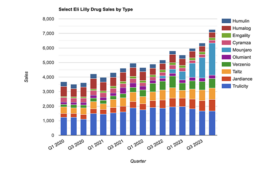|
The much-heralded new regulatory pathway for approving biosimilars or follow-on biological drugs included in this year’s healthcare reform law relies on a complex and untested series of patent negotiations between innovator and generic biological drug manufacturers. Some experts are questioning whether a key part of the process is even legal.
“I’m not sure what this statute really gets you,” said Robert Dormer, patent attorney with the Washington, DC law firm of Hyman, Phelps & McNamara. “I am a skeptic about whether it will accomplish what it is intended to do. A lot of people read [the legislation] and it appears to be unworkable,” said Dormer, a former associate chief counsel at the U.S. Food and Drug Administration (FDA).
The biosimilars law, which grants innovator drug companies at least 12 years of marketing exclusivity, is very different from the well-established generic approval process for small-molecule, chemical drugs. With chemical drugs, generic manufacturers reference patents listed by the innovator company in the FDA’s Orange Book. The FDA typically does not require additional testing for safety and efficacy before granting approval. But the FDA has also been drawn into litigation when innovator companies file lawsuits against generic manufacturers claiming that their patents were infringed.
With biosimilars, innovator and generic manufacturers must enter into a series of negotiations and reach agreement about potentially infringing patents before the FDA will act. The arbitration process is so complex that it comprises 22 of 46 pages of the legislation. First, the would-be generic manufacturer submits its application to the FDA and sends a copy to the innovator company, which has 60 days to return a list of patents for which it “believes a claim of patent infringement could reasonably be asserted,” according to the law.
The generic manufacturer then has 60 days to give the innovator company a list of patents for which it thinks it could file an infringement claim. The two sides have 15 more days to negotiate and resolve any differences. If they cannot do so, the two sides “simultaneously exchange” lists of patents they believe could result in infringement claims. Any continued dispute allows the innovator company to file a claim of patent infringement.
However, if the innovator company fails to include a relevant patent in its lists, either through error or oversight, the law says it loses the right to litigate that patent in court. Some lawyers have questioned the legality of this provision, saying a plaintiff’s right to sue cannot be so deprived. But it may take years before any such case will be heard in court.
Cutting through litigation
The new process was designed to reduce the amount of litigation that has arisen with generic chemical drugs, said Kathleen M. Sanzo, a patent attorney with the Washington, D.C. lawfirm of Morgan, Lewis & Bockius LLP. “But it presents a lot of different questions and will cause a lot of controversy within the two industries,” she said. For instance, neither innovator nor generic manufacturers are likely to be pleased about sharing patent portfolios. “From a drug development perspective, this could be a significant problem,” Sanzo told a seminar held by the Washington Legal Foundation in July.
The process also grants the FDA a “surprising amount of discretion” in determining how much data is needed to approve a biosimilar drug, Sanzo added. Since the law doesn’t define the scope of data required to demonstrate biosimilarity, the FDA could require a generic manufacturer to conduct new clinical trials and other costly and time-consuming studies. Or, the FDA could simply accept a declaration that a follow-on drug is “expected” to show the same clinical effect as the innovator.
“Obviously, if the clinical tests required to show bioequivalence prove too costly, then the entire process is a failure,” said Ronald Eisenstein, a life sciences patent attorney at Nixon Peabody LLP in Boston. “Additional biosimilar products will not be available on the market except in rare instances where the profits justify clinical tests,” Eisenstein said. “For the process to work, the amount of clinical testing will have to be substantially less than for a new drug,” he told Drug Discovery & Development.
Some public policy advocates maintain that FDA should insist on clinical trial data for biosimilars, given their complexity and the variability in manufacturing. “Unexpected consequences may occur” during manufacturing, said Craig Kessler, PhD, professor of medicine and pathology at Georgetown University. In addition, these clinical trials should compare the biosimilar to the brand name drug, rather than to another biosimilar, Kessler told a policy forum hosted by the Congressional Health Care Caucus in July.
But having to conduct additional clinical trials is likely to dissuade even major drug manufacturers from pursuing follow-on biosimilars. Earlier this year, for instance, Merck & Co. decided to back away from developing its version of Amgen Inc.’s blockbuster anemia drug Aranesp after the FDA said clinical trials would be needed to assess the generic drug’s cardiovascular side effects.
Nevertheless, Merck remains committed to biosimilars. President and Chief Executive Richard Clark told an analyst and investor meeting in May that the company plans to have at least five biosimilar drugs in late-stage development by 2012 and to invest more than $1.5 billion by 2015. But he also expects the FDA will require the drugs to undergo clinical trials. “In terms of barriers to entry, I think that’s more significant than what some people were thinking they could do—which is just make it and put it into people and get it approved,” Clark said.
About the Author
Contributing editor Ted Agres, MBA, is a veteran science writer in Washington, DC. He writes frequently about the policy, politics, and business aspects of life sciences.
Filed Under: Drug Discovery





